By Meredith Duke
Our rosemary has bushed out into a wild, gargantuan organism growing in our yard. I think it’s approximately 3 feet high and 4 feet in diameter. It. Is. Huge. I’ve been trying to figure out what to do with this beautiful rosemary bush and I’m planning on using every single bit of it. I can only dry so much rosemary, so I’ve been hunting for ways to utilize it. Here’s a great article showing three methods on how to dry rosemary. Using our organic rosemary for wellness and beauty fits with my simple living lifestyle. If you have a monstrous rosemary bush, take note of some of these ideas on how to use rosemary By the way, rosemary is incredibly good for you. Rosemary is one of the herbs included in this beginners guide to medicinal herbs. I love how the author uses rosemary. According to Medical News Today, the health benefits of rosemary include:
- Improved digestion
- Enhanced memory and concentration
- Neurological protection
- Prevention of brain aging
- Protection against cancer
- Protection against macular degeneration
10 Ways to Use Rosemary In the Kitchen
- Rosemary Salt. Pull the rosemary leaves from the stem to make 1 cup. Add it to 3 cups of salt. Stir it all together and let it sit for approximately two weeks, covered. This creates an infused rosemary salt that can be used on any number of dishes.
- Rosemary Infused Olive Oil. Pour 2 cups of olive oil into a small pot. Bring to a slight simmer. Turn it off and remove it from the heat. Wash and completely dry 3 or 4 rosemary sprigs and place into a clean jar. Pour the oil into the jar with the rosemary sprigs. The longer you let it sit the stronger the infusion is.
- Rosemary Honey. Add 5 rosemary sprigs (each about 3 inches long) to 1 cup of honey in a small pot. Bring to a simmer for about 5 minutes. Remove from heat and let steep for about 45 minutes. Remove the rosemary sprigs and pour the honey into a small container. Use on toast, drizzle over goat cheese or brie, or use as a sweetener in tea.
- Rosemary Simple Sugar. Bring 1 cup of water to a boil. Add 2 cups of sugar and 3 or 4 rosemary sprigs. Stir until the sugar has dissolved (about 5 minutes). Remove from the heat. Remove the rosemary sprigs. Pour the simple sugar into a jar. To use, drizzle it on fresh fruit or add it to smoothies. Or, for something sweeter, drizzle it over a sponge cake, bundt cake, or angel food cake for a delicate twist.
- Rosemary Jelly or Jam. I’ve seen quite a few rosemary jelly recipes. Some require vinegar and others are just jellies with sugar (which I prefer). I’ll be making this rosemary jelly recipe soon. Try it on breads, chicken, fish or even lamb.
- Rosemary Skewers. When grilling chicken (think kabobs), we used rosemary stems as skewers. The stems infused flavor into the chicken, plus the smoke from the grill was amazing. We’ll definitely do this again.
- Rosemary Infused Vinegar. Jeanne at www.myownlabels.com has directions for making Rosemary Infused Vinegar. This is another recipe I’ll be using this year!
- Fresh Rosemary Lemonade or Limeade.Bring 2 1/2 cups of sugar to a boil. Remove from the heat. Add 9 sprigs of rosemary to the pot and let it steep for 30 minutes. Strain and combine with 1/2 cup of lemon juice or lime juice and 4 cups cold water. Chill. Taste test. Add more sugar or water as necessary.
- Freeze the herbs for later use.Wash and dry the rosemary leaves (after removing them from the stems). Chop into small pieces. Using an ice tray, fill each tray with rosemary leaves. Fill the tray with water and freeze. When frozen, pop out the rosemary ice cubes and store in a zipper bag in the freezer. Remove one or two cubes when ready to use them (add them to soups and stews, or thaw and use in marinades).
- Rosemary Butter. Soften a stick of real butter (do not melt). Meanwhile, wash and dry rosemary, removing the leaves from the stems. Dice into small pieces and blend with the butter until well combined. Use on breads or meats or slathered on crackers.
- Rosemary Pesto. You’ll need the following ingredients: 1 cup fresh rosemary, stems removed; 2 garlic cloves, diced; 2 tablespoons toasted pine nuts (toasted pecans or walnuts can be substituted); 1/2 cup parmesan cheese, grated; 1/4 cup olive oil; 1/2 teaspoon salt; and freshly ground black pepper, about 5 turns of the pepper mill. Directions: process rosemary, nuts, parmesan cheese, and garlic pulsing until everything is finely chopped and blended together. While the processor is running, stream in olive oil. Remove to a small bowl and stir in salt and fresh ground pepper. Store in an airtight container in the refrigerator for up to four days. Stir well before using.
3 Rosemary Uses Around the House
- Rosemary sachets. Sew simple bags to hold a bundle of dry rosemary leaves. Or, skip the sewing step and simply cut fabric into large squares with pinking shears. Lay the rosemary bundle in the middle. Bring the sides together and secure with a ribbon. Place the sachets in drawers, closets, or around the house.
- Gifts. Dry the rosemary (takes several weeks). Separate the dry leaves from the stems, divide into pretty jars (or re-use old spice jars), make labels, and give as gifts.
- Use Dried Rosemary for Dryer Sheets. Take a small drawstring bag and fill with dried rosemary sprigs. Throw this in the dryer with freshly washed clothes for a great way to naturally scent your laundry. You could even add dried lavender to this sachet.
How to Use Fresh Rosemary For Your Body
- Orange Rosemary Salt Scrub. You’ll need 1 cup salt, zest of 1 orange, 1 teaspoon rosemary leaves and 1/3 cup olive oil. I saw this recipe on Oleanderandpalm.com. I think this would be amazing on your hands (or feet for that matter).
- Rosemary Tincture. Stuff a small jar with fresh rosemary. Cover the rosemary with Everclear by one inch. Tighten the lid and store in a dark place for 4-6 weeks. Shake it every two or three days. When the time has elapsed, strain the mixture through cheesecloth. Store the rosemary tincture in an amber bottle. To use, adults can take up to 2 ml, three times a day.
- Rosemary Insect Repellent. There’s a great recipe for rosemary insect repellent. Since we live in Texas, we are inundated with insects for most of the year. This is on my to-do list to make this year!
- Rosemary Hair Rinse. 1/2 cup dried rosemary and 1/2 cup olive oil. Combine ingredients in a saucepan over medium heat until it is warm. Remove from the heat and let it steep for 20 minutes. Strain the mixture and pour into a small bottle. Coat your hair with the mixture. Cover your hair with a shower cap for 20 minutes. Rinse with cool water and wash as normal with shampoo.
- Rosemary Facial Toner. Mix 6 sprigs of fresh or dried rosemary with 2/3 cup of dried rose petals and 4 cups of witch hazel. Strain the mixture into an airtight container and discard the herbs. Wash your face and splash on a bit of rosemary facial toner.
- Rosemary and Lemon Bath Salts. Combine 2 cups Epsom salt; 1/2 cup baking soda; 2-3 tablespoons of fresh rosemary, finely chopped; 6-8 drops lemon essential oil; and 2-3 tablespoons of lemon zest (optional). In a bowl combine Epsom salt and baking soda. Add in half of the essential oil drops, mix, then add in the remaining drops. Mix in the chopped rosemary and lemon zest. Store in an airtight container.
Disclaimer: Not a substitute for professional medical prevention, diagnosis, or treatment. Please consult with your physician, pharmacist, or health care provider before taking any home remedies or supplements or following any treatment suggested by anyone on this site. Only your health care provider, personal physician, or pharmacist can provide you with advice on what is safe and effective for your unique needs or diagnose your particular medical history. Pregnant women should be very cautious when using abundant amounts of rosemary as it can cause miscarriages.
Growing Rosemary
Rosemary can be a very easy plant to grow, but it does need some special attention if it is going to thrive. In the first place, it prefers its soil to be loamy, and it also requires it to drain well, especially if the plant is potted. The ideal pH is somewhere around six and seven.
Rosemary also likes light, the more the better. Although it can take a bit of shade, it will do best if it receives full sun. This can make it tricky to grow indoors, but with the right conditions and, occasionally, a little artificial help, it is not impossible.
As for water, rosemary does not need much. As has already been mentioned, drainage is important, and in the same vein, it is crucial that you avoid watering until the soil is dry. This is especially important to pay attention to if you are growing your rosemary in a pot, as it is easy for the roots to fall prey to rot. You can also mist the leaves with water from time to time, approximately once a week, but primarily keep your focus on the soil.
Rosemary does require pruning, frequently just because it can grow to be so massive. However, in the spring, you should cut off all the dead wood, and you should prune it again after its flowering stage. You want to avoid any gangliness, so trim fairly often.
Planting
Spring is the best time in which to plant rosemary. If you live in a warmer climate, however, fall is also suitable. Just make sure that the temperature of the soil measures about 70 degrees Fahrenheit (approximately 21 degrees Celsius).
You can start with a cutting, a seedling, or a larger plant purchased from a nursery. If you wish to use a cutting, measure 5 to 8 inches on an existing rosemary plant and snip off that portion. After clearing the leaves off the bottom two inches, place the cutting in water up to at least the lowest three nodes. Once roots grow, you can transfer the cutting to a pot and then, after the roots have become strong, to the ground.
There are two main varieties of rosemary: that which grows into a bush and that which trails and forms a ground cover. When planting rosemary in the ground, consider using the bush variety as a hedge or the trailing variety in a rock garden. Whatever you do, be sure to keep your plants spaced about 2 to 3 feet apart, as rosemary is capable of growing quite large.
Overwintering and Growing Rosemary Indoors
The best way to carry your rosemary through the winter is to transfer your pot indoors or to dig your plant up, pot it and bring it inside. However, you need to make sure interior conditions are just right. Be sure to water carefully as described earlier, and strive to give your plant 6 to 8 hours of full sunlight, using a growlight if necessary. Rosemary can do well in cooler indoor temperatures, but if for some reason the temperature dips below 20 degrees Fahrenheit (about -7 degrees Celsius), do not count on your plant’s thriving.
If you do choose to leave your plant outdoors, be sure to cover the ground with mulch. This will help to seal in some warmth and give your plant a better chance of survival.
How to Harvest Rosemary
There is no special time for harvesting rosemary. However, when you do wish to cut some off, take the younger portions of the plant, as this will give you optimal flavor. You can also harvest a good amount of rosemary at once, but be sure to leave two-thirds of the plant intact. If you do collect this much, it is necessary that you allow the plant to regrow before you harvest any additional cuttings.
Just as there is not a designated harvest time, neither is there a particular harvesting technique. The stems are long and leafy, making it impossible to determine a special spot at which to cut. Therefore, simply remove as much as you need, keeping in mind that new branches will form at the place at which you cut. The one rule is never to cut down to the crown, because this will inhibit the plant’s growth.
Drying and Preserving Rosemary
After you cut your rosemary, you may wish to save it for future use. There are three techniques you can employ to accomplish this end.
How to Dry Rosemary
In the first place, you can dry the rosemary. The easiest ways to do this are either to position the washed cuttings on a rack or to tie them in bunches and hang them inverted. Once they are completely dry, you can remove the leaves and place them in an airtight jar. If you would rather not let the air do the work, you can try using the oven on its lowest setting or even putting the sprigs into a food dehydrator, again at a low temperature.
How to Freeze Rosemary
It is also possible to freeze rosemary. If you wish to preserve only the leaves, strip your cuttings and toss the leaves into a bag, removing the air and then rolling and sealing it. Another option is to place the fresh leaves in ice cube trays filled with olive oil or water. If, however, you want to keep entire sprigs, lay them out on a baking sheet and freeze them for an hour or two. Once they are completely frozen, you can carefully transfer them to a bag.
Infusing Rosemary in Oil
Although it does not keep the rosemary distinct as freezing and drying do, infusing your sprigs in vinegar or olive oil is another way to preserve this herb. There are many recipes available showing how to accomplish this. You can make a herbed red wine vinegar, infused with fresh parsley, sage, and rosemary. Another option is to make rosemary infused oil with a slow cooker or stovetop. These infusing methods are convenient ways to save your herb while bringing its flavor into various dishes.
Whether you are a beginner or an expert gardener, you can get a lot out of growing your own rosemary plants. They are relatively easy to grow and look well in an extensive variety of landscape arrangements. Not only decorative, however, they are also abundantly useful. With a little care, you can enjoy both the aesthetic and practical applications of this well-loved herb.
Meredith Duke is a homesteading mama near Austin, Texas. She and her family are beekeepers, gardeners, hunters, and general “DIYers.” They are always seeking ways to expand their skills and learn the “old ways,” whether it’s canning, quilting, or simply trying to find new ways to be good stewards of their God-given resources. You can read more about the Duke family’s adventures at sangabrielfarm.com.







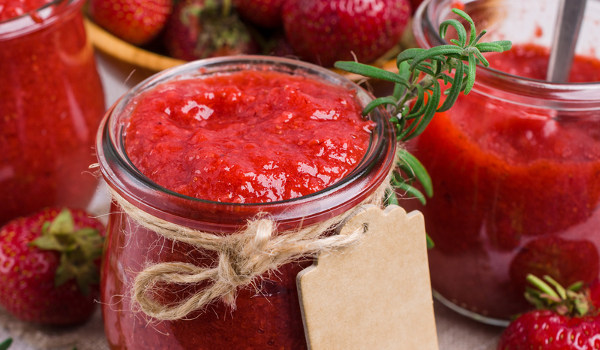

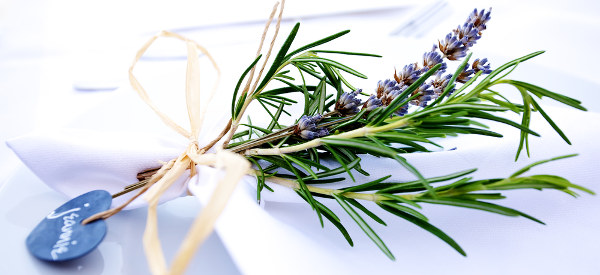
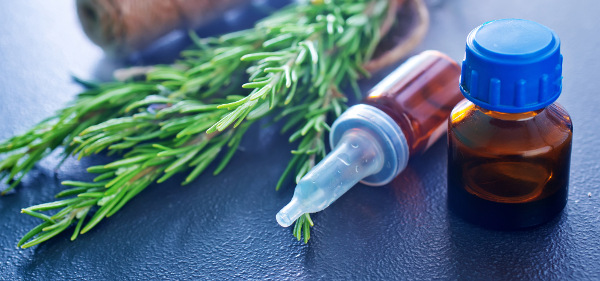
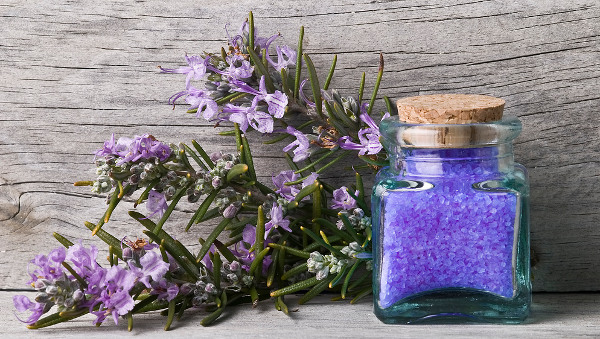
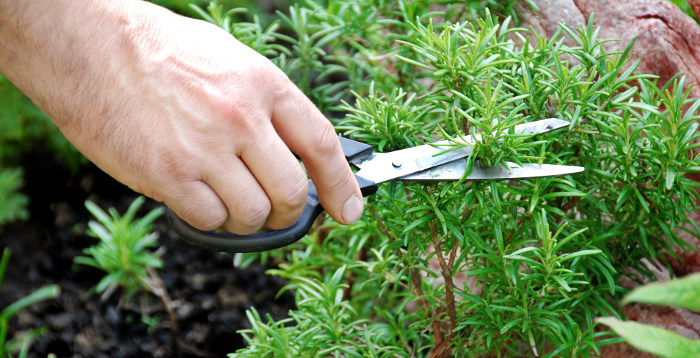
Great ideas! Thank you for linking up with the Art of Home-Making Mondays at Strangers & Pilgrims on Earth!
Love the ideas !! Can’t wait to use my rosemary in different ways